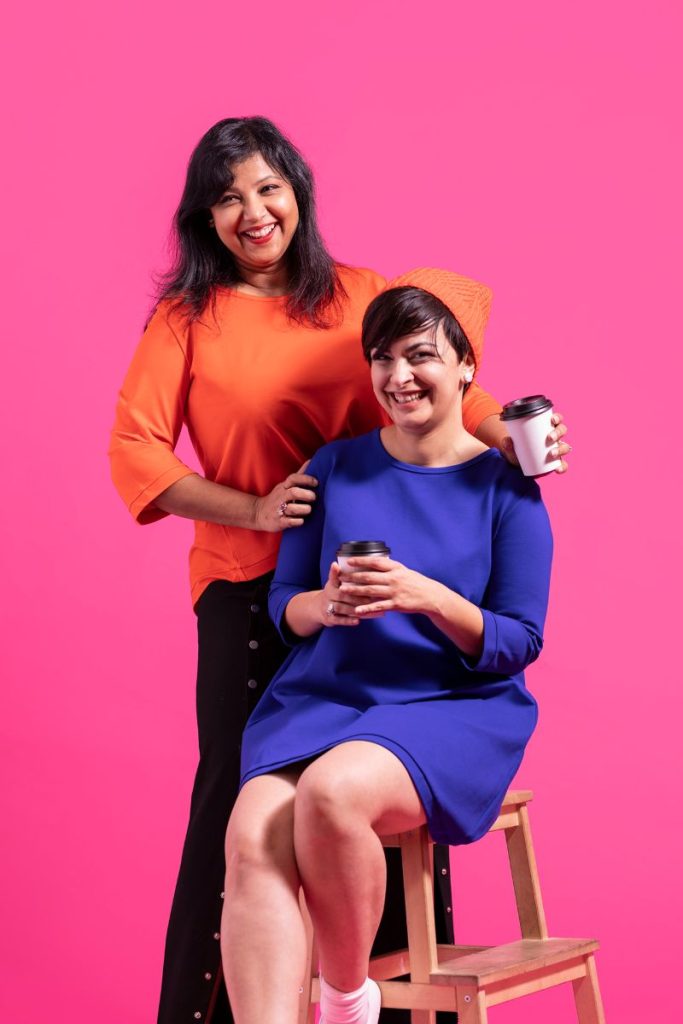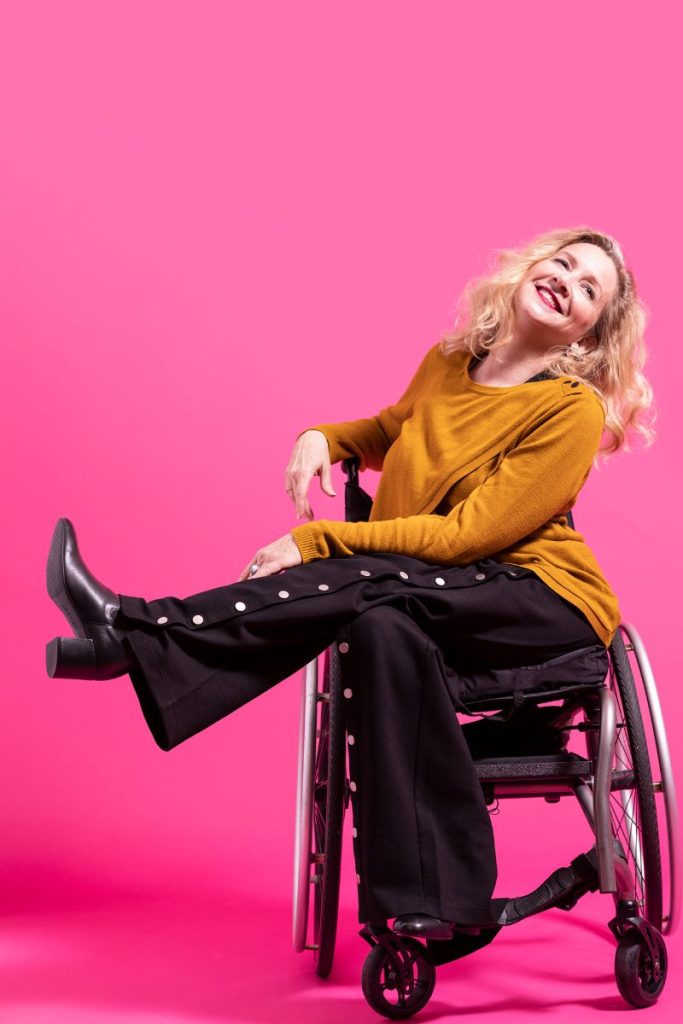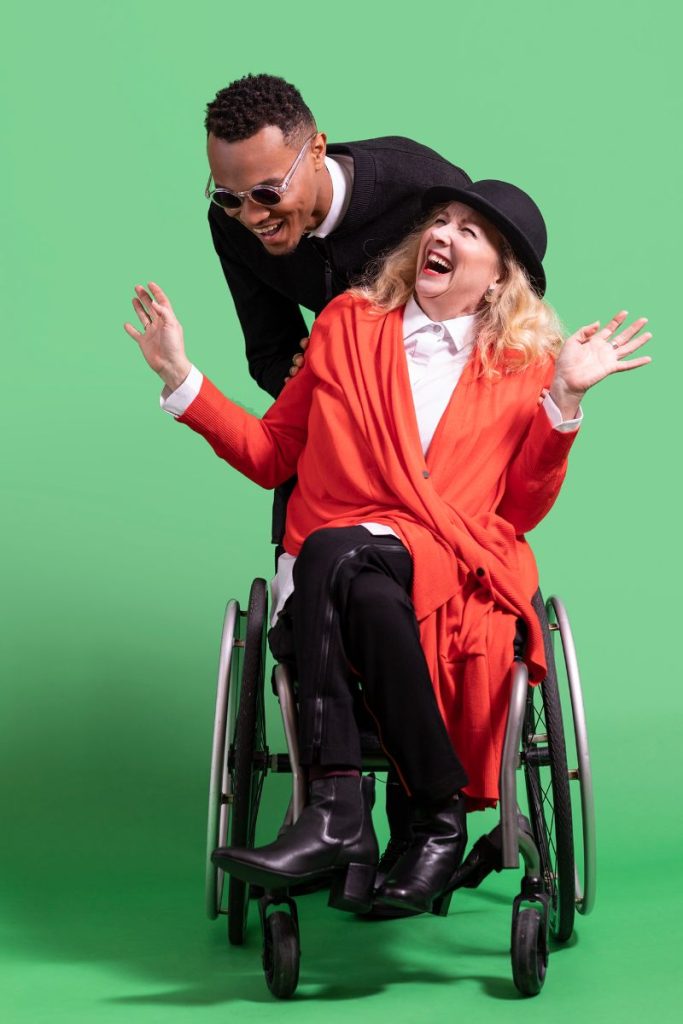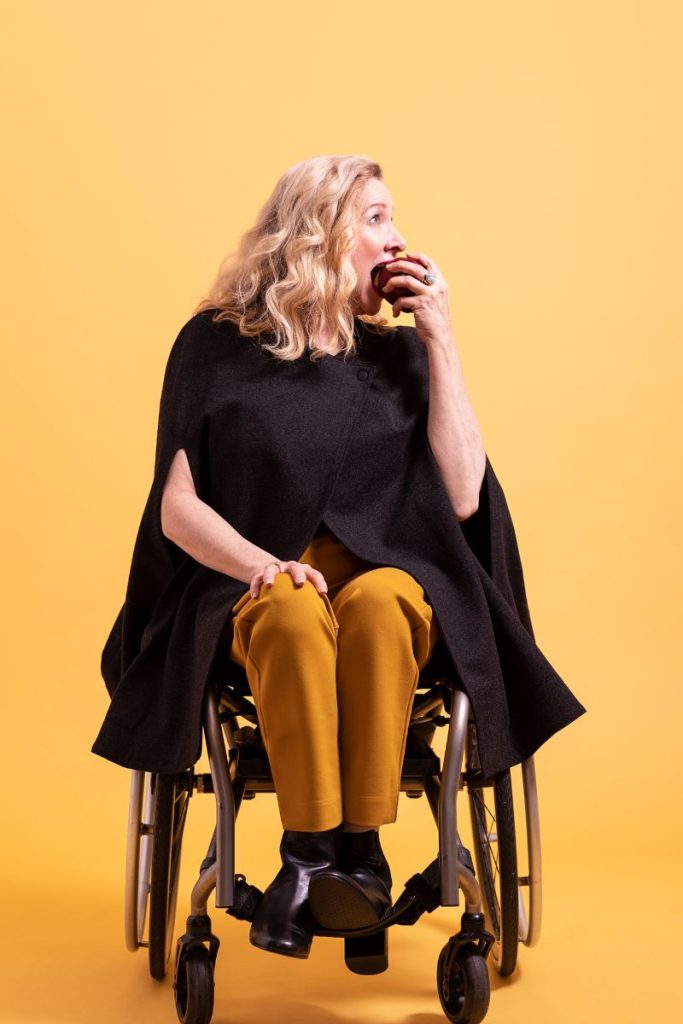e3 KONCEPT
|
A universal clothing for a more dignified and independent lifestyle.

Representation in fashion saw a gradual and visible shift– in many ways– over the past few years. The celebration of diversity–celebrating people of every age, body size, gender, culture and race– is more apparent than ever. Even so, representation of disability remains an issue that industry is still struggling with, even as diversity is at the forefront in society. Underrepresentation raises the question of if the fashion brands also take disabled people and their needs into consideration when designing and promoting their products intended to support diversity.
The availability of accessible and inclusive fashion choices for disabled people that embraces their needs and their freedom of self-expression is essential– for genuinely reflecting inclusivity and a strong sense of belonging and community.
e3 Koncept, a contemporary inclusive clothing line based in Toronto, Canada, made for everybody– with everybody in mind–, has responded to calls for universal clothing.
They design simple, functional, and fun clothing without sacrificing beauty, equally usable by those with and without physical challenges.
“Our goal is to enable a more dignified and independent lifestyle for our customers.” e3 KONCEPT.
The co-founders of e3 Koncept, Rushmita Alam and Mana Mojaver take us on an inspiring journey of how the brand came to be, what it stands for, the difference inclusive design can make, and the significant benefits of implementing an all-encompassing inclusive design concept.
On the inspiration that motivated e3 Koncept:
Started officially in 2018 in Toronto, the e3 koncept journey started long before
Rushmita’s life changed forever when her father suffered a stroke during a surgery in 2008 that left him paralyzed in a deteriorating state for the rest of his life. The incident was the start of her journey to understanding what it means to cope with having a loved one affected with a physical disability. Which later led her to the path of understanding the need for design solutions for life.
Mana’s life with disability also started at a very early age. Growing up with a relative who suffered a hidden disability, she understood the importance of feeling the need to be included. The idea later resurfaced while recovering from a shoulder injury herself–she realized how difficult it was to put clothes on every morning and thought of the millions of people that go through something similar every day.
The co-founders crossed paths while they were both professors at the Fashion Design program. The duo’s life stories intersected over lunch while sharing each other’s journeys, core values, and life proposes – and that was the birth of e3 Koncept.
The Significance of the name e3 KONCEPT:
E3 is based on three pillars, easy to care for, easy to wear, and ethically made. The reverse “e” in our logo represents the uniqueness and individuality that each customer brings forward.
The e3 KONCEPT style is:
Contemporary, simple, and Bold.
We design clothing that is simple, functional, and fun without sacrificing beauty. Our designs are equally usable by those with and without physical challenges.
On what inclusive design means:
According to the inclusive design research center, inclusive design is the design process that considers the full range of human diversity concerning ability, language, culture, gender, age, and other forms of human difference. It recognizes the diversity and uniqueness of every person, no matter what their ability is. It considers cultural, social, and other needs.
On the difference between inclusive design and accessibility:
We want to quote Microsoft’s quote to explain the difference:
“Accessibility is the qualities that make an experience open to all. Inclusive design is the design methodology that enables and draws on the full range of human diversity. It is the principle of designing for people who have a diversity of needs, experiences, and backgrounds. Accessibility is an attribute of Inclusive design.”

On how inclusive design is different from universal design:
There is a fine line between universal design and inclusive design–it can sometimes be challenging to differentiate between the two design processes.
According to The Center for Universal Design at North Carolina State University, the most widely used definition, “Universal design is the design of products and environments to be usable by all people, to the greatest extent possible, without the need for adaptation or specialized design.”
Universal design is generally more focused on a single solution that as many people as possible can use. In contrast, Inclusive design is “a methodology that enables and draws on the full range of human diversity. Most importantly, this means including and learning from people with a range of perspectives.” Call it inclusive or universal design or design for all; the last outcome is the same: a design for the betterment and possible most comprehensive user.
On the importance of the terminology when advocating for inclusivity:
The two design processes are often interchangeably used: inclusive design, accessibility, universal design, or design for all. The concept varies among different professions, cultures, and interest groups. They all are different names of approaches that primarily focus on the same goal at the end–increasing the accessibility in the design process for the broadest possible range of use.
We believe e3 Koncept falls under the umbrella of all these ‘3’ processes: accessibility, universal design, and inclusive design or design for all. We base every e3 design on ongoing research, co-creating with end-users, prototyping, and customer feedback. Our goal is to bring well-engineered designs that can be usable by a wide range of abilities such as impairment, elderly and hidden disabilities.
On the challenges, the design elements of the available clothing impose on accessible fashion:
Aesthetic and artistic elements heavily burden fashion. Though functionality is one of the basic design elements, we can see how aesthetics has taken over the function– if we look back to our history. Medieval, Baroque, Rococo or any other era is an example of this. We had been inventing challenges for ourselves to reach the height of creativity. Most of the fashion we see on the runway creates a restriction to body form other than “normal.” We had always been creating designs that are only for “able Bodies.” Same design elements such as small buttons, zippers, and openings are challenging for individuals with hand dexterity, autism, or wheelchair users.
It’s not only about accessibility in design elements, but It’s also the mindset of us that created a barrier to think out of the “Norm.” It is time to rethink “normal” and “abnormal.”

“Let’s embrace our differences and work together hand in hand
to make fashion more inclusive!”
On how designers can make clothing more inclusive:
Designers need to rethink from a broader perspective–we need to look into the full range of diversity and recognize the uniqueness of every individual as a designer’s playground. To create an inclusive and universal design– Questioning, Brainstorming, and Collaboration are always a great place to start!Inclusive garments don’t need to sacrifice fashionability:
Creativity is not born from freedom but driven by constraints. And what is fashion without imagination? Therefore, the inclusive design doesn’t need to sacrifice style–And that is the essence of e3 Koncept.On challenges of implementing inclusive design:
The challenge is in our mindset. Our designs are wearable both with and without mobility challenges. Often people misunderstand that our clothing line is only for people with disabilities; at e3 Koncept, we create an inclusive culture that is barrier-free and equal for all.On the benefits of all-encompassing inclusive design concept:
We live in a global village, and we are connected more than ever; we are more diverse in gender, race, ethnicity, religion, age, and abilities. We need to rethink how to address the diverse needs of people. Only through rethinking and redesigning can we make a better future.“It’s not only about accessibility in design elements, but It’s also the mindset of us that created a barrier to think out of the “Norm.” It is time to rethink ‘normal’ and ‘abnormal’.”


Inclusivity in fashion education is essential:
One out of four adults lives with some disability.
Every area of design– fashion, built environment, or digital–ignores these underrepresented voices. Only in the last few years research, programs and initiatives have been taken to make the world accessible and usable by all. But, there is much more progress to be made, especially in fashion. The next generation of fashion designers needs to think more inclusive, universal, and accessible to address this need.
Fashion schools should consider teaching universal design strategies in their programs. And professors are responsible for challenging the concept of “norm in fashion” in the classrooms and creating environments that allow students to question and rethink design.
On the increasing community of inclusive fashion designers:
In the last few decades, the world witnessed various global challenges that made us rethink and redesign. We see the new generation is more open-minded; We are talking about inclusion design for all. We believe this way the fashion industry will be stronger than ever.
On the progressive future of inclusive design:
The world is much more inclusive today than in the past. Although there are still a lot of challenges, we are constantly making progress. We want to acknowledge this progress and continue making the world inclusive.
“Let’s embrace our differences and work together hand in hand to make fashion more inclusive!”∎












